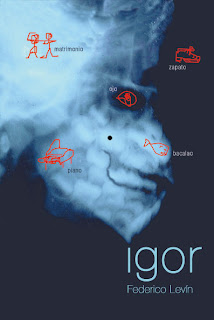
This Thursday born Igor. Russian.
Looking for something I did not find, I found something that ... etc.
This is the first page of Igor, the first I wrote and that, with enough changes and corrections, the novel begins.
is, yes, the first page of the manuscript of Igor. Manuscript in its literal sense, because before I wrote with my hands. with one hand.
now this practice has become so unusual that the word manuscript had to get another job, and name something else: the publishers say they have drawers full of 'manuscripts' when talking about printing word files.
This sheet shows the trembling of my pulse, and even a hole of burning ash.
The notebook, its cover, said to be in 2001. Then started all this, which ends in a few days from 3 to 29 year 7. After much beyond writing.
Bah, ends. A little start, too.





